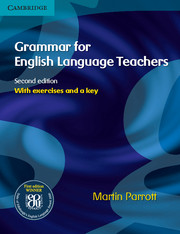Introduction to Part A
Published online by Cambridge University Press: 09 February 2023
Summary
Words and grammar are often thought of as being separate entities. In fact, in learning any word we are also learning something about its grammar.
Words belong to different grammatical classes (e.g. noun, verb, preposition), and the class of a word determines:
• what other kinds of words we can combine with it.
Example: a beautiful day not *a beautifully day
Explanation: We use adjectives not adverbs to qualify nouns.
• the order in which we combine words.
Example: a beautiful day not *a day beautiful
Explanation: We normally put adjectives before the nouns they qualify.
Grammar also determines, for example:
• which form of a word we choose.
Example: two day not *two day
Explanation: After numbers greater than one we use a plural form of the noun.
Example: more beautiful not *beautifuller
Explanation: We use more to make the comparative form of long adjectives and add er to make the comparative form of short adjectives.
As teachers we need to know and to be able to explain and illustrate:
• the grammatical class of words: beautiful or beautifully?
• the grammar of words: day or days?
• the implications of ‘word grammar’: We can’t say: *a beautifully day., *a day beautiful, *two day, *beautifuller
In Chapters 1–8 we look at words that belong to the following grammatical classes:
We look at pronouns in Part C (pp 304, 371–2) not Part A. This is because learners’ difficulties are closely related not only to decisions about number and gender but also to:
• judgements about how much information needs to b e stated explicitly, and how much can be left out.
• issues of grammatical function (e.g. subject or object).
Chapter 9 focuses on the ways in which words of different grammatical classes combine in use.
Recognising word classes
In some languages the word itself tells us a lot about what class it belongs to (for example, the spelling and pronunciation of the end of a word may show that it is a noun). In English there are very few clues in the word itself, and we usually have to look at the context.
- Type
- Chapter
- Information
- Grammar for English Language Teachers , pp. 6 - 8Publisher: Cambridge University PressPrint publication year: 2010



